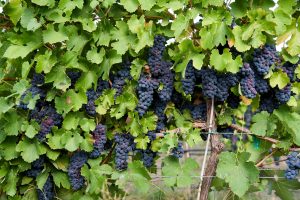
November 27, 2017 Business faculty studying why individuals start wineries, vineyards in locations across nation
Preliminary research to be scaled into larger effort analyzing trends in wine industry entrepreneurship
By Maegan Murray, WSU Tri-Cities
RICHLAND, Wash. – From renowned winemaking regions to those that aren’t typically known for winemaking, business faculty from Washington State University Tri-Cities are studying why people start wineries in locations across the United States.
 Wine is currently made in every state in the nation; however, there are wineries located in regions that may not be suitable for grape growing or that don’t have a heavy foundation in wine entrepreneurship, said Rhonda Hammond, WSU Tri-Cities assistant professor of hospitality business and wine beverage business management.
Wine is currently made in every state in the nation; however, there are wineries located in regions that may not be suitable for grape growing or that don’t have a heavy foundation in wine entrepreneurship, said Rhonda Hammond, WSU Tri-Cities assistant professor of hospitality business and wine beverage business management.
Study examines winemakers’ motivations
“There is a gap in data regarding entrepreneurship in the wine industry,” Hammond said. “There hasn’t been a lot of research conducted on wine entrepreneurship in the United States. Not all winemakers are established in the places best for winemaking.”
Hammond, Byron Marlowe, clinical assistant professor and wine and beverage business management program coordinator, and Paul Skilton, associate professor of management, want to understand winemakers’ motivations and analyze major themes in entrepreneurship for wineries across the industry
In spring 2017, the researchers examined 307 U.S. wineries and vineyards as identified by Wine America, the national association of American wineries. They analyzed web and other digital media information to determine why wine makers chose various winery locations, and to see if location impacted success.
Location familiarity may trump best growing climate
Hammond said their initial research indicates some winery owners, especially for those in regions that aren’t known for wine, may have sought out locations based on familiarity, regardless of whether the region’s soil, atmosphere, reputation and other conditions were conducive for winemaking. Others may import their fruit juice from other locations, she said.
“If people are already familiar with a place, then it makes it easier for them to be aware of opportunities and feel more comfortable starting a business in that location,” she said. “Some may also be able to import grape juice. Just because they may not be able to grow the grapes there, doesn’t mean they won’t be able to get the juice to produce wine.”
Hammond said wineries located in climates unsuitable for grape growing may also make wine with other fruits.
“The definition of wine is fermented fruit juice,” Hammond said “Hawaii, for example, is making pineapple wine. With the ability to transport juices, winemakers can utilize materials from other regions.”
The researchers plan to expand their research into a more extensive study where they will reach out to wineries across the country to assemble in-depth information about the wineries’ beginnings.
“We are hoping this can give us some direction and hopefully turn into something much bigger for the betterment of the wine industry,” Hammond said.





